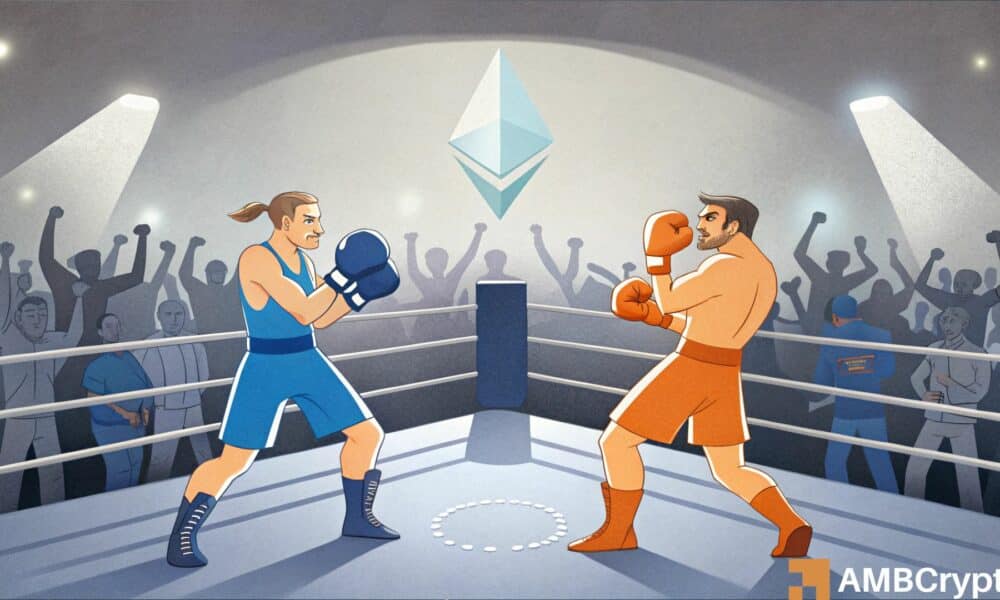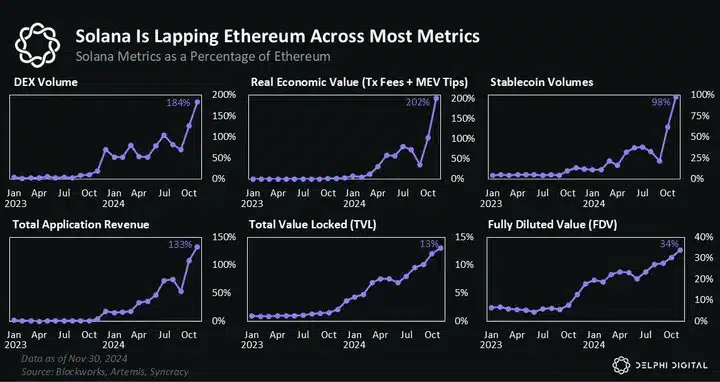The fight for the future of decentralized finance boils down to two very different bets. Ethereum is rebuilding itself from the ground up, banking on security and a layered system.
Solana is pushing a single, super-fast chain to its absolute limit. This isn’t just a technical squabble over market share. Instead, it’s a conflict over what a blockchain should be, and the recent upgrades from both camps are drawing a clear line in the sand.
Two blueprints for a decentralized world
You can’t understand the rivalry without looking at how they’re built. Ethereum is tearing itself apart to become a “modular” system. It’s becoming a trusted backbone for other chains—Layer-2s like Arbitrum and Optimism—to build on top of. Think of it as a secure foundation, with other specialized chains handling the fast, everyday transactions. The Dencun upgrade was a huge step in this direction, using a new feature called “blobs” to make transactions on those Layer-2s dramatically cheaper.
As expected, these upgrades coupled with ETF inflows had a significant impact on the altcoin’s price on the charts too. At the time of writing, the crypto was close to $4,000 on the charts, having hiked by 165% in just over 3 months.
Solana’s approach is the polar opposite. It keeps everything on one supercharged layer, arguing that a single, finely-tuned chain is the only way to get the speed needed for global adoption. Its unique Proof-of-History (PoH) clock allows it to process an immense number of transactions at once. This means apps on Solana can interact with each other fluidly, without the clumsy bridges you need in Ethereum’s world.
That modular path gives Ethereum’s Layer-2s top-notch security, but it also splinters the ecosystem and can make the user experience a confusing maze of different networks. Solana’s all-in-one design makes everything feel seamless and cheap, but the hardware needed to run it is a beast, and the network has a history of just switching off.
Money vs. People – A tale of two metrics
When you look at the money, Ethereum is still king. Its Total Value Locked (TVL) shows where the deep-pocketed trust lies, a legacy of being the first and most established platform.
But if you look at what people are doing, Solana is running circles around it. By May 2024, more people were using Solana daily than Ethereum, pulled in by transaction fees that cost fractions of a cent. Its architecture is built for a flurry of activity. In 2024 alone, Solana was handling 81% of all trades on decentralized exchanges and 64% of all NFT mints across every chain.
For a long time, building on Ethereum was the only serious option for a developer. That’s changing.
In fact, an Electric Capital report in late 2023 showed Solana was attracting more new developers than Ethereum for the first time. While Ethereum still has the bigger, more experienced talent pool, Solana’s high-performance Rust environment is a magnet for new builders, especially in Asia.
Ghosts in the machine – Outages and gas fees
Each chain’s core design choice comes with its own notorious headache.
Solana’s obsession with speed has led to some infamous crashes, moments when the entire network just stopped. These outages have made people nervous about its reliability. A new validator client called Firedancer, built by Jump Crypto, is the proposed fix.
It promises to make Solana more robust and ridiculously fast—potentially handling over a million transactions per second—while also making the network less fragile by diversifying its software.
Ethereum’s problem is the opposite – It gets clogged, and using it becomes painfully expensive. During busy times, these “gas fees” can skyrocket, pricing out regular users. Layer-2s are fixing this, but the high costs on the main chain have long been a major complaint and a powerful marketing tool for its rivals.
On decentralization, the picture is also mixed. Ethereum has over a million validators, but a huge chunk of the stake is concentrated in a few liquid staking pools like Lido. Solana has far fewer validators (around 3,200) because of its steep hardware costs, raising different centralization alarms.
Real-world engines – NFTs, games, and DePIN
DeFi doesn’t live in a bubble. The real growth engine is culture—things like digital art (NFTs), gaming, and real-world applications (DePIN) that bring in floods of new people.
Ethereum’s big-ticket NFT projects created a class of collectors who then needed places to trade and borrow against their art, feeding its financial ecosystem. Solana’s cheap fees turned it into a playground for high-volume NFT marketplaces and breakout games like STEPN, whose users naturally started using Solana’s DeFi tools.
A project called Helium even moved its entire wireless network to Solana, turning nearly a million hotspots into NFTs and showing how real-world hardware could be plugged directly into a blockchain’s financial system.
So, who wins? (It’s complicated)
The “ETH vs. SOL” showdown is looking less like a fight to the death and more like two different tools being built for two different jobs. Ethereum is carving out its identity as the financial system’s secure, decentralized backbone – A settlement layer for high-value transactions and a universe of L2s.
Solana, especially if Firedancer delivers, is becoming the go-to platform for things that need to happen right now—trading, social media, and gaming.
As technology gets better at letting users and cash flow between chains, picking a single winner becomes pointless. The real victory is having a choice. We’re moving toward a future where different chains do different things well, giving users a financial internet that is faster, cheaper, and more open than ever before.

